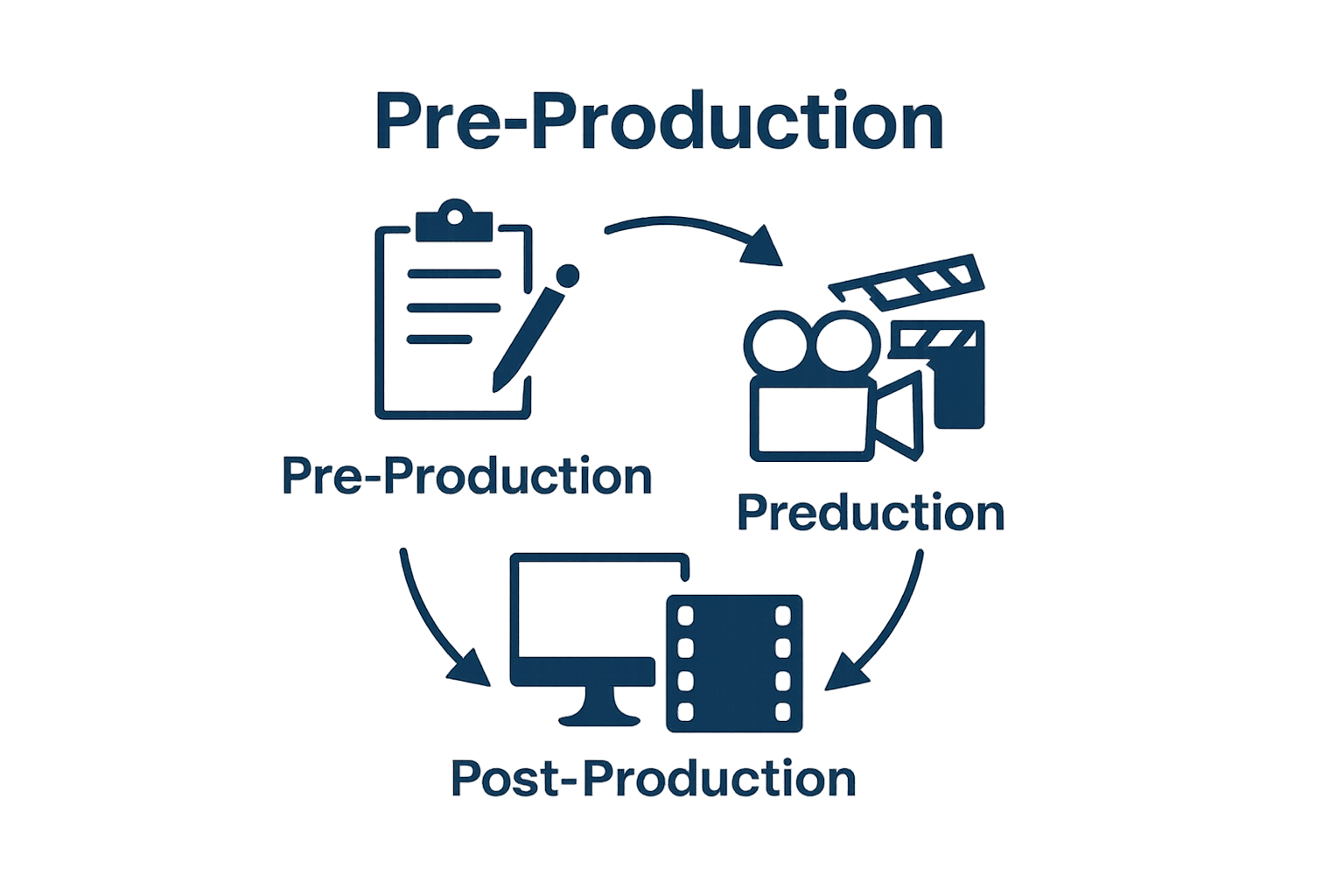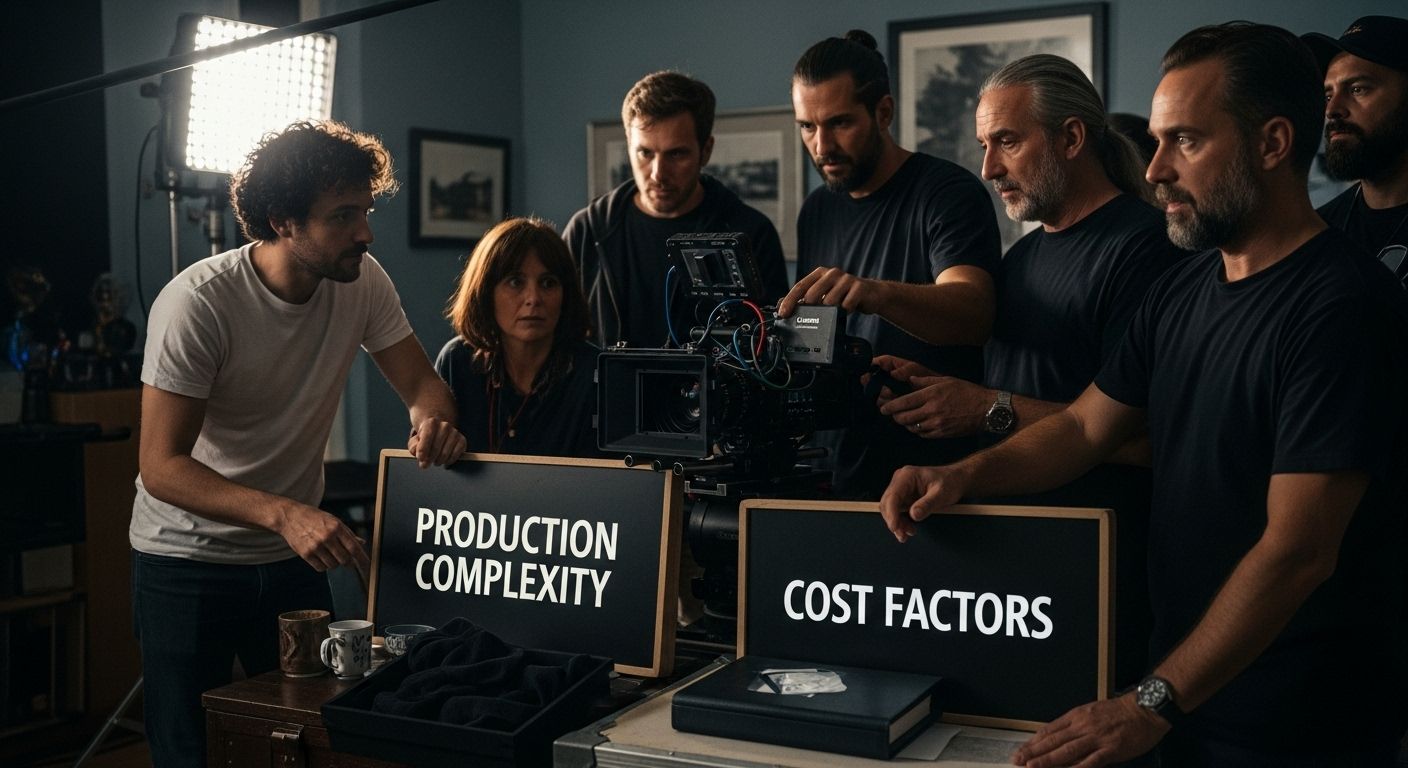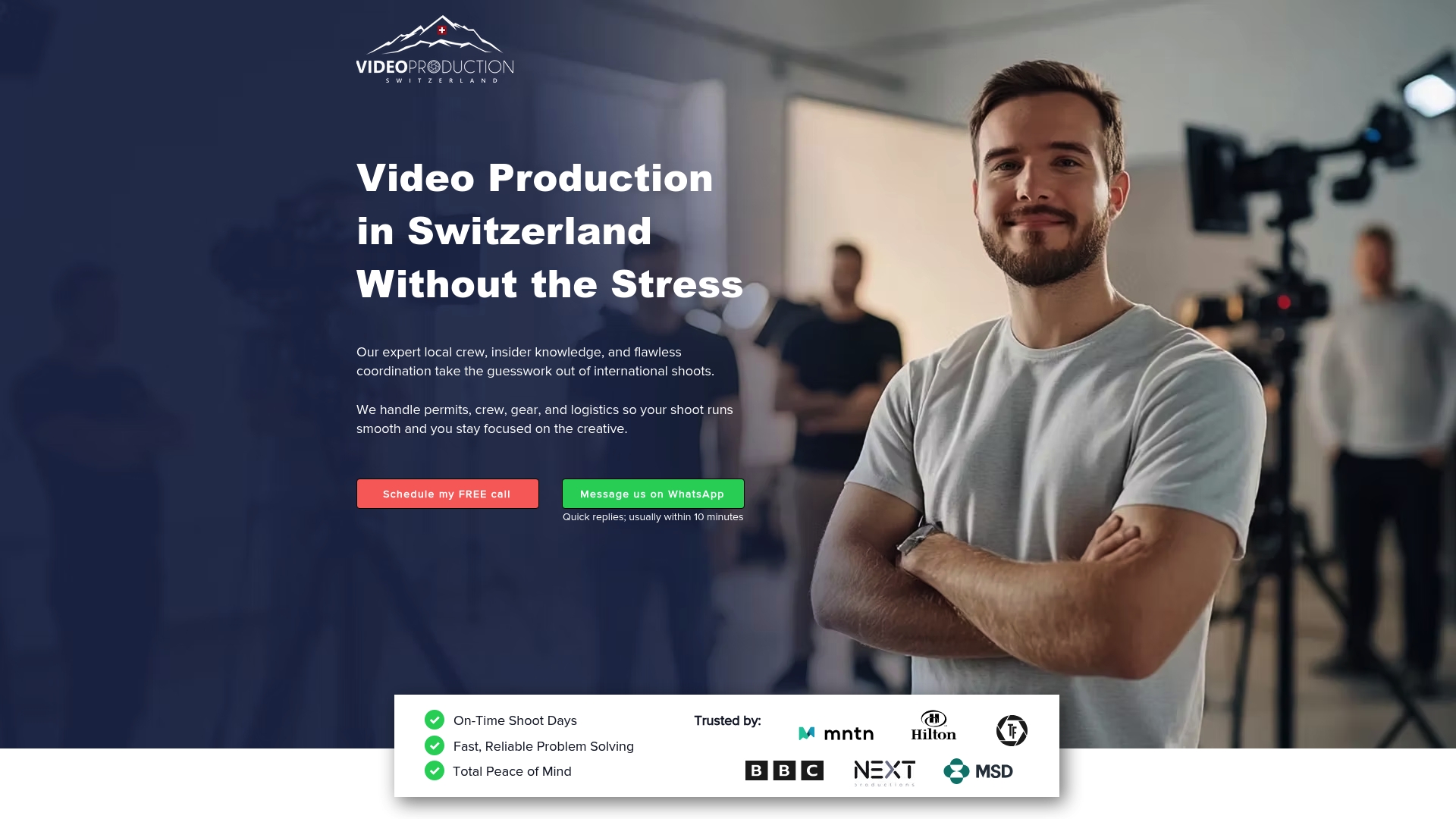Understanding Video Production Cost Breakdown
- info1419758
- Sep 7
- 7 min read

Video production costs can leave even experienced media teams scrambling to make sense of where the money goes. Many expect gear rental and talent fees to be the main story. But a closer look reveals that organizations conducting detailed cost analysis are actually 40 percent more likely to finish projects on time and within budget. That number flips the script and proves that financial planning is just as creative as picking the right shot.
Table of Contents
Quick Summary
Takeaway | Explanation |
Understand the core cost categories | Familiarize yourself with pre-production, production, and post-production costs to budget effectively. |
Evaluate factors affecting costs | Recognize that length, complexity, and resources significantly influence video production expenses. |
Prioritize strategic financial planning | Anticipate budget overruns and allocate resources wisely to enhance project outcomes. |
Optimize rather than minimize budget | Aim to utilize resources efficiently to maintain quality while staying within budget restraints. |
Maintain flexibility in budgeting | Create budgets that adapt to changes without compromising on quality or financial stability. |
Defining Video Production Costs: Key Components Explained
Video production costs represent a complex financial landscape that encompasses multiple interconnected elements. Understanding these components helps media professionals and businesses accurately budget and plan their visual content strategies. These expenses are not simply about equipment rental or talent fees but involve a comprehensive ecosystem of creative and technical investments.
The Fundamental Cost Categories
Video production costs typically break down into several core categories that work together to create a final product.

Primary cost components include:
Pre-Production Expenses: Planning, scripting, storyboarding, location scouting, and initial creative development
Production Costs: Actual shooting expenses including crew salaries, equipment rentals, location fees, and talent compensation
Post-Production Investments: Editing, color grading, sound mixing, visual effects, and final content refinement
Each category contributes uniquely to the overall budget, with variations depending on project complexity, quality requirements, and specific production goals.
The table below summarizes the key categories of video production costs along with examples and their main purposes, helping clarify budget allocation for each stage.
Cost Category | Examples | Main Purpose |
Pre-Production Expenses | Planning, scripting, storyboarding, location scouting | Creative planning and setup |
Production Costs | Crew salaries, equipment rentals, location fees | Filming and capturing footage |
Post-Production Investments | Editing, color grading, sound mixing, visual effects | Refining and finalizing content |
Minimizing production costs requires strategic planning that balances creative vision with financial constraints.
Factors Influencing Cost Variability
Multiple dynamic factors impact video production expenses. Professional productions might range from a few thousand dollars for basic corporate videos to hundreds of thousands for high-end commercial or cinematic projects. Key influencing variables include:
Video length and complexity
Number of shooting days required
Professional expertise of the creative team
Technical equipment specifications
Location and travel considerations
Post-production complexity
Understanding these nuanced elements helps professionals develop more accurate budget projections and set realistic expectations for their video production initiatives.
The Importance of Understanding Video Production Costs
Comprehending video production costs goes far beyond simple financial tracking. It represents a strategic approach to creating visual content that balances creative vision with economic realities. Proper cost understanding transforms potential budget challenges into opportunities for innovative problem solving.
Strategic Financial Planning
Effective video production cost management requires deep insight into how financial resources directly impact project outcomes. Understanding the balance between cost and quality becomes crucial for media professionals seeking exceptional results within realistic budget constraints.
Professional video production involves intricate financial considerations that extend well beyond basic expense tracking. Key strategic planning elements include:
Anticipating potential budget overruns
Identifying cost-effective production alternatives
Allocating resources strategically across production phases
Creating contingency funds for unexpected expenses
Risk Mitigation and Resource Optimization
Accurate cost understanding serves as a critical risk management tool. By developing comprehensive financial awareness, production teams can:
Prevent unnecessary financial strain
Make informed decisions about resource allocation
Select appropriate production methodologies
Maintain project scope and quality standards
Projects without clear financial roadmaps often encounter significant challenges. According to research from University of Florida, organizations that invest time in detailed cost analysis are 40% more likely to complete projects successfully and within original budget parameters.
Ultimately, understanding video production costs transforms financial planning from a mundane administrative task into a strategic creative opportunity. It empowers teams to make intelligent choices that maximize both artistic vision and economic efficiency.
Factors Influencing Video Production Costs: A Closer Look
Video production costs are not uniform or predictable. They represent a complex interplay of multiple variables that can dramatically impact the overall financial investment required for creating visual content. Understanding these nuanced factors helps media professionals develop more precise budgeting strategies.
Production Complexity and Scale
The complexity and scale of a video project serve as primary determinants of production expenses. Minimizing production costs requires strategic approaches that account for project-specific requirements. Different production scales introduce unique financial considerations:
Small corporate videos with minimal setups
Mid-range commercial productions
High-end cinematic or narrative projects
Complex documentary or investigative films
Each scale introduces distinct cost variables related to equipment, talent, location, and technical requirements.
The following table compares how different levels of production complexity and scale affect various cost factors, providing a clear snapshot for teams to anticipate budgeting needs.
Production Scale | Equipment Needs | Talent Requirements | Typical Cost Range | Project Example |
Small Corporate Video | Minimal/basic gear | Few (1-2) crew/talent | Low (thousands) | Company intro video |
Mid-Range Commercial | Moderate/pro gear | Multiple crew/pro actors | Medium (tens of thousands) | Local TV commercial |
High-End Cinematic/Narrative | Advanced/cinema grade gear | Large crew, well-known talent | High (hundreds of thousands) | Film or TV pilot |
Complex Documentary | Varied/pro gear + permits | Crew, subject matter experts | Medium to high | Investigative documentary |

Professional productions demand comprehensive financial planning that accounts for these intricate differences.
Technical and Human Resource Investments
Two critical cost drivers in video production are technical infrastructure and human expertise. According to research from the University of Florida, organizations must carefully evaluate their resource allocation across several key dimensions:
Professional camera and lighting equipment
Specialized editing software and post-production tools
Experienced creative and technical personnel
Location accessibility and potential permit requirements
Talent compensation and professional model/actor fees
Advanced visual and sound editing capabilities
The quality of these investments directly correlates with the final production value. Lower-cost alternatives might compromise visual storytelling, while excessive spending does not guarantee superior outcomes. The key lies in strategic resource optimization that balances financial constraints with creative vision.
Budgeting for Video Production: Strategic Considerations
Effective video production budgeting transcends simple number crunching. It represents a sophisticated strategic process that balances creative vision, technical requirements, and financial constraints. Successful budgeting transforms potential limitations into opportunities for innovative storytelling.
Financial Framework and Cost Allocation
Developing a comprehensive budget requires meticulous planning and strategic resource allocation. Understanding balancing cost and quality becomes crucial in creating a financially sustainable production strategy. Professional budgeting involves structured financial considerations:
Establishing clear budget categories
Identifying potential financial risks
Creating flexible spending frameworks
Developing contingency financial reserves
Prioritizing essential production elements
Each budget line represents a strategic decision that directly impacts the project’s overall creative and technical potential. Successful media professionals understand that budgeting is not about minimizing expenses but optimizing resource utilization.
Comprehensive Budget Components
According to research from the International Documentary Association, professional video production budgets typically encompass multiple interdependent components:
Pre-production planning and research expenses
Personnel and talent compensation
Equipment and technical infrastructure costs
Location and logistical expenses
Post-production editing and refinement
Marketing and distribution considerations
The most effective budgets maintain flexibility while providing clear financial guidelines. They anticipate potential variations and include strategic buffers that allow creative teams to adapt without compromising project quality or financial stability.
Eliminate Uncertainty from Your Video Production Budget in Switzerland
Worried about unpredictable video production costs or the challenge of balancing creative goals with a realistic budget? The article explains how complex factors like crew expertise, equipment choices, permits, and location logistics can be overwhelming, especially if you are managing an international project. Trying to forecast every expense while maintaining high production value can quickly become stressful.

Let our local experts at Video Production Switzerland handle all the logistical details for you. We specialize in transforming complicated cost breakdowns into simple, transparent budgets backed by over 20 years of hands-on experience. From managing permits to sourcing reliable crew and equipment, our team anticipates costly surprises before they happen. Curious about our proven approach? Schedule your free consultation and discover how our dedicated service process can help you maximize your production value while keeping costs under control. Now is the perfect moment to put an end to budget uncertainty and focus on your creative vision.
Frequently Asked Questions
What are the main components of video production costs?
Video production costs generally break down into three main categories: pre-production expenses (like planning, scripting, and location scouting), production costs (including crew salaries and equipment rentals), and post-production investments (such as editing and visual effects).
How do project complexity and scale affect video production costs?
The complexity and scale of a video project significantly influence production expenses. Smaller corporate videos typically require fewer resources compared to high-end cinematic projects, which involve more equipment, talent, and intricate logistics.
What factors should I consider when budgeting for video production?
When budgeting for video production, consider elements such as personnel and talent compensation, technical equipment expenses, location fees, post-production editing costs, and potential financial risks. Establish clear budget categories and develop contingency funds for unexpected expenses.
How can I minimize video production costs without compromising quality?
To minimize video production costs, focus on strategic planning by identifying cost-effective alternatives, optimizing resource allocation, and prioritizing essential production elements. Balancing cost and quality through informed decision-making is key to achieving a successful outcome.
Recommended

Comments